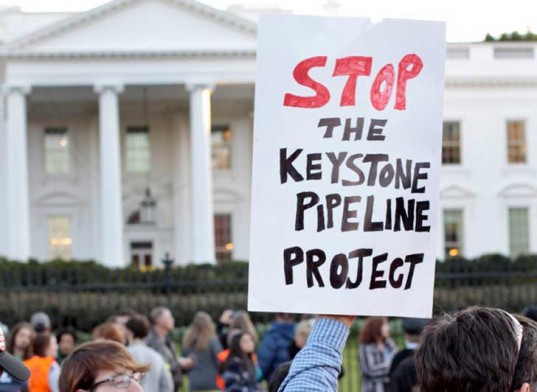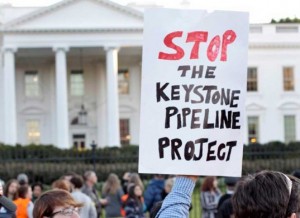August 16, 2014 – In a debate that has raged on both sides of the 49th parallel, whether to build or mothball the Keystone XL oil pipeline remains a hot topic. Canada has sent its Prime Minister, its Foreign Minister, its Energy Minister, assorted premiers and other bigwigs to Washington and New York to tout the advantages that Keystone XL will bring to the United States.
The American State Department in its initial analysis declared that the pipeline “does not significantly exacerbate the problem of carbon pollution.” This seemed to be a green light indicator being given to President Obama who has the final say in approving the pipeline’s construction. In its conclusions the State Department indicated Keystone XL in delivering 830,000 barrels of crude from the oil sands each day would increase carbon emissions by a mere 1.3 million tons per year.
But a new study which appears in the August 10, 2014 issue of Nature Climate Change paints a very different picture. The authors, Peter Erickson and Michael Lazarus, of the Stockholm Environment Institute in Seattle, Washington, state that the oil from the pipeline will lead to lower prices and higher consumption and that will mean an extra burden of 110 million tons of carbon dioxide per year. That’s a big discrepancy from the State Department’s figures.
Others argue that regardless of whether the pipeline is built or not, demand for oil sands crude will mean product will get shipped anyway, either by alternate pipeline routes or by surface rail. It’s the broader pattern of behaviour that needs to stop.
The truth is the Keystone XL pipeline has become more symbolic of a society prepared to bury its head in the oil sands rather than face the need to reduce fossil fuel consumption to tackle carbon pollution and climate change.













